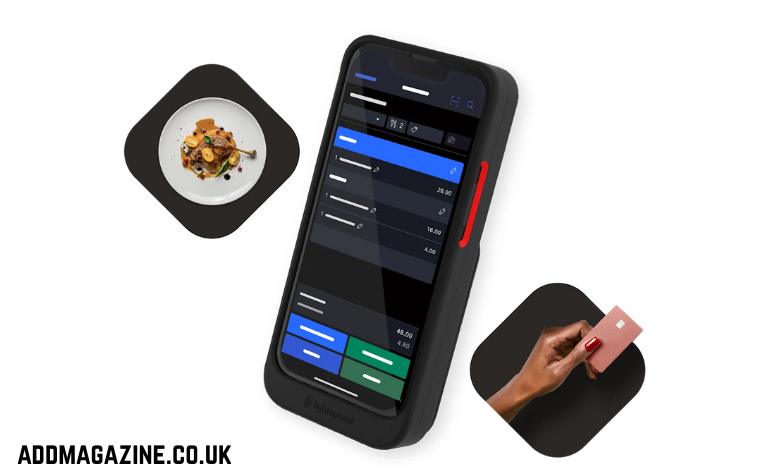In the rapidly evolving world of software development, one of the most important shifts has been the move toward more structured, reusable, and efficient ways of managing code and programming processes. Among the various paradigms and methodologies that have emerged, the concept of OO RN stands out as an evolving framework that’s changing how developers approach coding, particularly in the realm of object-oriented programming.
In this blog post, we will dive deep into what OO RN stands for, its significance, how it integrates with existing software development processes, and why it’s gaining traction in various industries.
What is OO RN?
OO RN stands for Object-Oriented Reactive Networks. It’s a framework that blends principles from object-oriented programming (OOP) and reactive programming, creating a new approach to building dynamic, scalable applications. While OOP is well-known for organizing software around objects and classes, and reactive programming focuses on asynchronous data streams, OO RN takes this a step further by introducing a network-oriented architecture. This architecture emphasizes the interaction between objects and their environment in real-time, allowing for the handling of events and changes as they happen.
OO RN integrates concepts from both paradigms to create highly efficient, event-driven systems where objects not only communicate with each other but also react to changes in the network or data flow dynamically. It’s an approach that aims to improve performance, scalability, and maintainability in complex applications, particularly those with a high demand for real-time data processing.
The Evolution of OO RN: From Object-Oriented to Reactive
To understand OO RN fully, it’s essential to first look at its foundational components: object-oriented programming (OOP) and reactive programming. These two paradigms have each made significant contributions to modern software development.
Object-Oriented Programming (OOP)
OOP is a programming paradigm based on the concept of “objects,” which are instances of classes. A class defines the properties (attributes) and behaviors (methods) that an object will have. OOP encourages developers to structure their code by organizing it into classes and objects, which promotes modularity, reusability, and easier maintenance.
The core principles of OOP—encapsulation, inheritance, and polymorphism—allow developers to create systems where data and functions are bundled together, and objects can interact in controlled ways. This paradigm has been widely adopted due to its simplicity and effectiveness in managing complexity, particularly for large-scale applications.
Reactive Programming
Reactive programming, on the other hand, is a paradigm that deals with asynchronous data streams. It allows developers to create systems that are more responsive, scalable, and maintainable by focusing on data flows and the propagation of change. Instead of manually managing each event or state change, reactive programming uses a declarative approach where the system reacts automatically to changes in data streams.
This makes reactive systems particularly useful for applications that need to handle real-time data, such as chat applications, live updates, or stock market dashboards. Reactive programming enables developers to build applications that are more resilient to failures, as they can respond to changes or disruptions without breaking the entire system.
Combining OOP and Reactive Programming: The Birth of OO RN
OO RN brings the best of both worlds by combining the modularity and structure of OOP with the flexibility and responsiveness of reactive programming. In OO RN systems, objects are not only designed to hold data and behaviors, but they are also capable of reacting to changes in their environment—whether it’s a change in state, an incoming event, or a shift in the data stream.
For example, in a traditional OOP system, an object might request data from a server, and it would wait for a response. In an OO RN system, however, the object might subscribe to a data stream or event source. When new data arrives or an event occurs, the object automatically reacts and updates itself accordingly.
This network-oriented approach allows for more efficient handling of data, particularly in distributed systems where multiple objects may need to react to changes in real-time. OO RN leverages reactive streams to ensure that all objects in the network stay in sync with the most current data, enhancing the overall performance and reliability of the system.
Why OO RN Matters in Software Development
The integration of object-oriented and reactive programming principles in OO RN offers several benefits, particularly in complex, high-demand environments. Here’s why OO RN is becoming increasingly important:
1. Scalability
Modern applications often need to handle massive amounts of data and users simultaneously. OO RN’s event-driven nature ensures that objects are only updated when necessary, preventing unnecessary resource consumption. By relying on reactive streams, systems can handle high volumes of requests and data changes efficiently, making OO RN ideal for building scalable applications.
2. Real-Time Data Processing
In industries like finance, gaming, e-commerce, and social media, real-time data processing is essential. OO RN allows objects to respond dynamically to incoming data streams, making it possible to build systems that update in real-time. Whether it’s processing live stock market data, updating social media feeds, or reflecting real-time game events, OO RN ensures that data is always fresh and current.
3. Fault Tolerance and Resilience
OO RN systems are designed to react to changes and failures, making them more resilient than traditional systems. Since objects can subscribe to data streams and automatically handle errors or disruptions, OO RN enables fault tolerance in complex applications. This is crucial for systems that need to stay operational even when parts of the network or data flow experience issues.
4. Simplified Maintenance and Development
With OO RN, developers can create systems that are more modular and maintainable. By combining OOP’s encapsulation and modular design with the reactive approach of handling events, OO RN allows developers to focus on individual objects and their interactions with the environment. Changes to one part of the system won’t necessarily affect others, making it easier to maintain and scale applications over time.
Applications of OO RN
OO RN is gaining traction in various industries, particularly those that deal with complex, data-intensive, and real-time applications. Here are several key applications where OO RN can be highly effective:
1. Financial Systems
In the financial industry, OO RN is used to build real-time trading platforms, stock market dashboards, and risk management systems. The ability to process and react to market data in real-time is critical in this fast-paced environment. OO RN allows financial applications to stay up-to-date with market fluctuations and provide immediate responses to users.
2. IoT and Smart Systems
The Internet of Things (IoT) is a key area where OO RN can shine. IoT systems often consist of multiple devices that need to communicate and react to each other. OO RN makes it possible for objects in the network to respond to changes in data streams, making it easier to build dynamic and adaptive IoT systems.
3. Gaming
In gaming, especially multiplayer online games, real-time updates are essential. OO RN enables the creation of game systems that can handle player actions, environmental changes, and game state updates in real-time. By using reactive streams, game objects can interact more efficiently, ensuring that the player experience is seamless and responsive.
4. Healthcare Applications
Healthcare applications, especially those that monitor patients in real-time, can benefit from OO RN. By allowing medical devices to communicate and react to changes in a patient’s condition, OO RN makes it possible to build systems that provide immediate responses to critical health data. This can be particularly valuable in environments like emergency rooms or intensive care units.
Challenges of Implementing OO RN
Despite its many advantages, OO RN is not without its challenges. Implementing this approach requires a deep understanding of both object-oriented and reactive programming principles. Developers need to be skilled in designing event-driven architectures and managing the complexities of real-time data flows.
Additionally, integrating OO RN into legacy systems can be challenging, as it often requires significant changes to existing codebases. However, as the demand for more responsive and scalable applications continues to rise, OO RN will likely become an increasingly important tool for developers.
Conclusion
OO RN represents an exciting and evolving approach to software development, blending the best of object-oriented and reactive programming principles. By enabling systems that are scalable, real-time, and fault-tolerant, OO RN is changing the way developers build modern applications. As more industries adopt this framework, its impact on software development will likely continue to grow, creating more efficient, responsive, and maintainable systems in the process.




